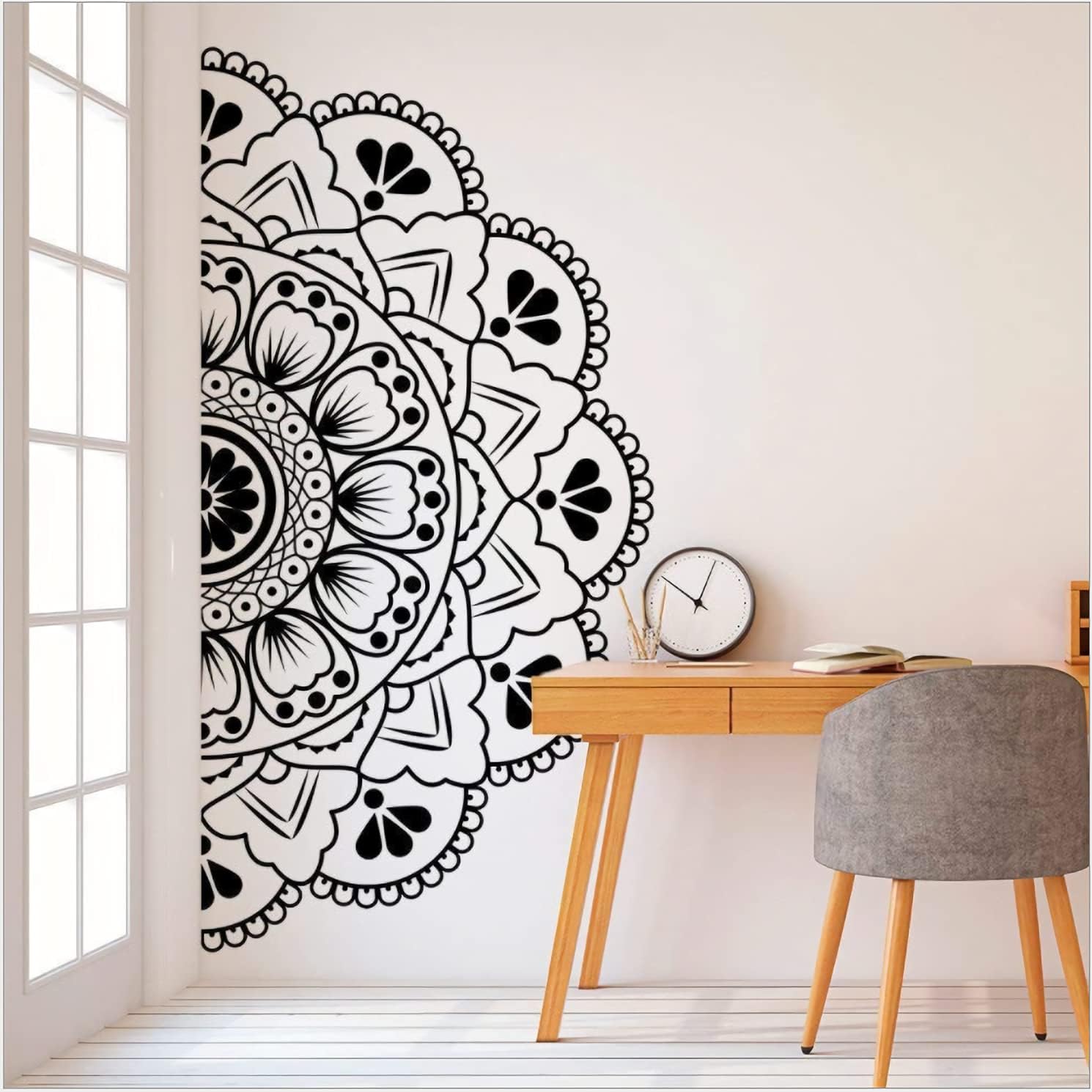
Minimalist interiors have a reputation for being clean, quiet, and calming. There’s something about open spaces, neutral tones, and simple lines that puts the mind at ease. But even minimalism can feel a bit too sterile if there’s nothing on the walls. That’s where simple mandala wall art comes into play. It slips right into these bare spaces and brings a sense of peace without taking over the room. It’s like a breath of fresh air—subtle, balanced, and quietly beautiful.
What Is Mandala Wall Art?
A mandala is a geometric design that holds a spiritual or symbolic meaning in many cultures. The word “mandala” comes from Sanskrit and means “circle.” These designs are often circular, symmetrical, and filled with repeating patterns. Mandalas have been used in religious rituals, meditation, and healing for centuries. Today, they’re found in all kinds of art—especially on walls where calm vibes matter most.
Why Minimalism Needs A Little Warmth
Minimal interiors do a great job of reducing visual clutter. But they can feel cold if everything is too plain. Adding a soft, balanced piece of wall art creates a shift. It doesn’t scream for attention. It whispers peace. The circular patterns of mandalas naturally draw the eye and give the room a center—a calm point to return to. They make empty walls feel intentional, not forgotten.
The Power of Repetition and Symmetry
There’s something soothing about patterns that repeat. Mandalas rely on this repetition to create balance and symmetry. Your brain picks up on these cues, and that’s where the calm feeling comes from. In a world filled with noise and constant movement, sitting in a room with symmetrical shapes feels like pressing pause. It grounds you.
Subtle Color, Big Impact
Most mandala art pieces used in minimal interiors stay within a soft color palette—think black and white, earth tones, or muted shades. These colors fit perfectly in neutral rooms without interrupting the calm. You get the visual interest without overstimulation. The art becomes part of the space instead of fighting for space.
Texture Adds Depth Without Clutter
Minimal rooms often lack texture, which can make them feel flat. Wall art made of wood, metal, or woven fabric brings in a layer of depth without piling on stuff. A mandala carved into wood or painted on canvas creates quiet contrast. It catches light differently. It draws you in gently, not loudly. You notice it, but it doesn’t crowd the space.
Mandalas and Mindfulness Go Hand in Hand
Many people use mandalas as a tool for meditation. They’re calming to look at and help focus your thoughts. Having one on your wall can serve as a daily reminder to breathe, slow down, and stay present. In minimal interiors, where distractions are already limited, a mandala reinforces that peaceful mindset. It turns your room into more than a place to sit—it becomes a place to reset.
Easy to Match, Easy to Love
Because mandalas come in so many styles—from ultra-simple line drawings to more detailed patterns—they work well with any kind of minimal décor. Whether your space leans toward Scandinavian simplicity or soft boho tones, there’s a mandala design that fits. You don’t have to completely change your room to make it work.
Creating a Focal Point Without the Noise
Minimal rooms usually have one or two focal points. That could be a couch, a plant, or a piece of art. Mandala wall art works perfectly here because it catches the eye without being loud. It brings balance. If your space feels like it’s missing something but you don’t want to fill it with objects, a mandala is the sweet spot.
The Emotional Effect of Circular Art
There’s a reason circles show up in so many calming things—ripples on water, the moon, a cup of tea. Circles are gentle. They don’t have sharp edges or stop-and-start points. A mandala’s circular form makes you feel like things are flowing. In a minimal room, where everything has its place, that soft, endless loop can shift your whole mood.
Hanging Mandala Art with Intention
Where you place your mandala makes a difference. Above the bed, it can set a peaceful tone for sleep. In a reading nook, it creates a bubble of calm. In the entryway, it gives guests a warm welcome without breaking the minimal aesthetic. The key is to hang it where your eyes will naturally go when you’re pausing or resting. That’s when the art does its best work.
Final Thoughts:
Minimalist interiors are built for peace, but they need a little heart to feel like home. Mandala wall art slips in quietly and gives just enough warmth to soften the edges. It’s not flashy. It doesn’t beg for attention. But once it’s there, it becomes part of the calm. It turns blank walls into soft pauses and makes simple spaces feel full of meaning.